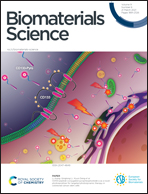Synthesis and characterization of an anti-caries and remineralizing fluorine-containing cationic polymer PHMB-F
Abstract
Dental caries have become a major global public health problem. Plaque control and remineralization of initial enamel lesions are paramount for the prevention and control of caries. Polyhexamethylene biguanide (PHMB) is a type of cationic amphipathic antibacterial agent with broad-spectrum antibacterial properties and good biological safety. Fluoride delays demineralization and promotes the remineralization of hard dental tissues. However, a high concentration is needed for it to function as an antibacterial agent. In order to create a PHMB with the benefits associated with fluoride, we synthesized a fluorine-containing cationic polymer, PHMB-F. Fourier transform-infrared spectroscopy and solid state nuclear magnetic resonance characterization confirmed the successful synthesis of PHMB-F. Antibacterial tests showed that PHMB-F had better antiseptic efficacy for Streptococcus mutans compared with just PHMB. Moreover, positively-charged PHMB-F allows fluoride ions to exist closer to the enamel surface with negative potential, which markedly lowers the ion concentrations in the microenvironment adjacent to hard dental tissues needed to maintain equilibrium. Thus, only low concentrations of PHMB-F are required for enamel remineralization.



 Please wait while we load your content...
Please wait while we load your content...